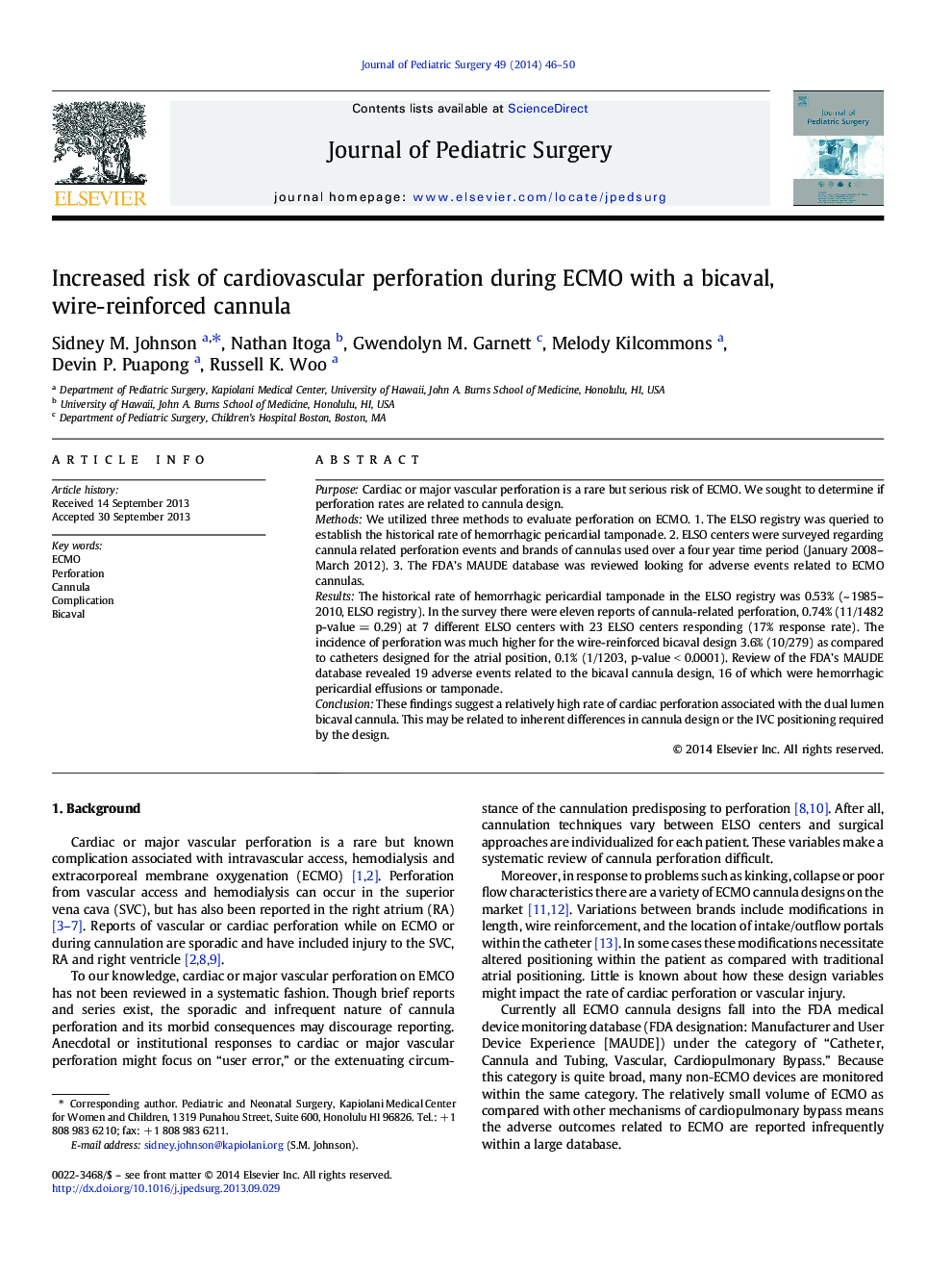| کد مقاله | کد نشریه | سال انتشار | مقاله انگلیسی | نسخه تمام متن |
|---|---|---|---|---|
| 4156055 | 1273766 | 2014 | 5 صفحه PDF | دانلود رایگان |

PurposeCardiac or major vascular perforation is a rare but serious risk of ECMO. We sought to determine if perforation rates are related to cannula design.MethodsWe utilized three methods to evaluate perforation on ECMO. 1. The ELSO registry was queried to establish the historical rate of hemorrhagic pericardial tamponade. 2. ELSO centers were surveyed regarding cannula related perforation events and brands of cannulas used over a four year time period (January 2008–March 2012). 3. The FDA’s MAUDE database was reviewed looking for adverse events related to ECMO cannulas.ResultsThe historical rate of hemorrhagic pericardial tamponade in the ELSO registry was 0.53% (~ 1985–2010, ELSO registry). In the survey there were eleven reports of cannula-related perforation, 0.74% (11/1482 p-value = 0.29) at 7 different ELSO centers with 23 ELSO centers responding (17% response rate). The incidence of perforation was much higher for the wire-reinforced bicaval design 3.6% (10/279) as compared to catheters designed for the atrial position, 0.1% (1/1203, p-value < 0.0001). Review of the FDA’s MAUDE database revealed 19 adverse events related to the bicaval cannula design, 16 of which were hemorrhagic pericardial effusions or tamponade.ConclusionThese findings suggest a relatively high rate of cardiac perforation associated with the dual lumen bicaval cannula. This may be related to inherent differences in cannula design or the IVC positioning required by the design.
Journal: Journal of Pediatric Surgery - Volume 49, Issue 1, January 2014, Pages 46–50